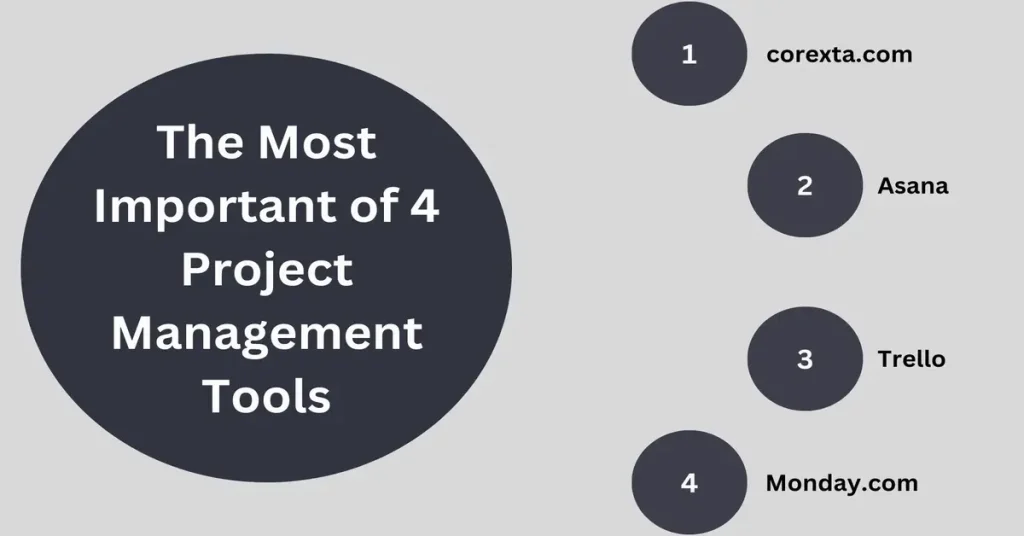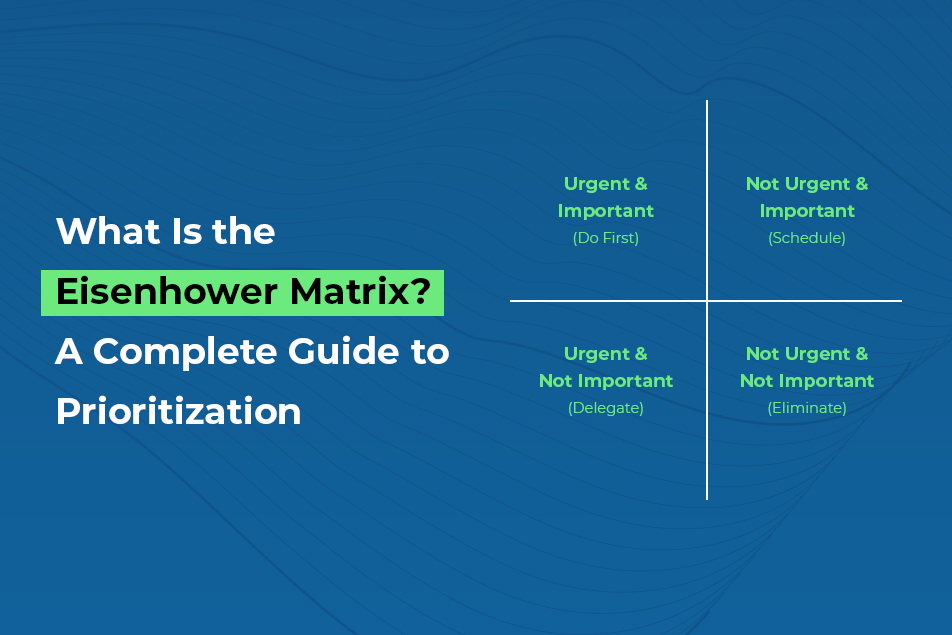Project management tools are the engines that drive successful projects. They are the gears that keep teams coordinated, tasks organized, and deadlines met. Understanding the significance of these tools and choosing the right ones can make a remarkable difference in project outcomes.
Importance of Selecting the Right Tools for Project Success
In the fast-paced world of project management, having the right tools can mean the difference between smooth sailing and chaotic turbulence. Imagine building a house without the proper tools – it would be a mess! Similarly, embarking on a project without the appropriate management tools can lead to missed deadlines, communication breakdowns, and overall project failure.
To ensure project success, selecting tools that align with the project’s specific needs and objectives is crucial. Whether tracking tasks, managing resources, or facilitating communication, the right tools can streamline processes, boost productivity, and ultimately contribute to the project’s success.
Choosing the proper project management tools is like laying a solid foundation for a building. It provides stability, structure, and support throughout the project lifecycle. From planning and execution to monitoring and controlling, these tools are the backbone of project management, helping teams stay organized, focused, and on track.
Understanding Project Management Tools
Project management tools are like the Swiss Army knives of the business world. They’re versatile, handy, and can make your life much easier. But before we dive into the nitty-gritty details, let’s take a moment to understand what exactly project management tools are and why they’re so important.
Definition of Project Management Tools
Project management tools are software or applications designed to help teams plan, organize, execute, and track their projects more efficiently. These tools come in various shapes and sizes, offering multiple features and functionalities to suit project needs.
Imagine you’re planning a cross-country road trip. You wouldn’t set off without a map, right? Well, project management tools are like your digital roadmap, guiding you every step of the way. They help you define project goals, allocate resources, set deadlines, and monitor progress, ensuring you reach your destination on time and within budget.
Types of Project Management Tools
Now that we have a basic understanding of what project management tools are let’s explore the different types available:
- Task Management Tools: These tools help teams organize and prioritize their tasks. From creating to-do lists to assigning responsibilities, task management tools keep everyone on the same page and ensure nothing falls through the cracks.
- Communication Tools: Effective communication is the cornerstone of successful project management. Communication tools facilitate seamless collaboration and information sharing among team members, regardless of their location or time zone.
- Scheduling Tools: Keeping track of deadlines and milestones is crucial for project success. Scheduling tools help teams create and manage project timelines, allocate resources, and identify potential bottlenecks before they occur.
- Collaboration Tools: Collaboration tools foster teamwork and synergy by providing a centralized platform for sharing ideas, documents, and feedback. Whether brainstorming ideas or reviewing project deliverables, collaboration tools make it easy for teams to work together towards a common goal.
Key Criteria for Evaluating Project Management Tools
Now that we’ve got a grasp of what project management tools are and why they matter, let’s dig deeper into how to choose the right ones. Here are some key criteria to consider when evaluating project management tools:
Usability and User Interface
Picture this: you’re driving a car with confusing controls and buttons scattered all over the dashboard. Not exactly a smooth ride, right? Well, the same goes for project management tools. A user-friendly interface makes it easy for team members to navigate and use the tool effectively. Look for tools with intuitive layouts, clear instructions, and minimal learning curves.
Collaboration Features
In today’s interconnected world, collaboration is key. Project management tools should facilitate seamless communication and teamwork among team members. Features like real-time chat, file sharing, and task assignments make it easy for team members to collaborate effectively, regardless of their location or time zone.
Customization and Scalability
Every project is unique, and so are its requirements. Look for project management tools that offer customization options to tailor the tool to your specific needs. Whether it’s creating custom workflows, adding custom fields, or setting up automated reminders, flexibility is key. Additionally, consider the scalability of the tool. Can it grow with your team and adapt to changing project demands over time?
Integration Capabilities with Other Software/Tools
Chances are, your team is already using a variety of software and tools to manage different aspects of the project. Look for project management tools that integrate seamlessly with your existing tools and workflows. Whether it’s syncing tasks with your calendar, integrating with your favorite productivity apps, or connecting with your CRM system, integration capabilities can streamline your workflow and eliminate unnecessary manual work.
Pricing and Affordability
Last but not least, consider the cost. While some project management tools offer robust features and functionalities, they may come with a hefty price tag. Evaluate your budget and choose a tool that offers the best value for money. Keep an eye out for hidden fees, such as per-user charges or add-on costs, and consider any long-term commitments or contracts.
The Top Project Management Tools in 2024
In this section, we’ll dive into some of the top project management tools that are making waves in 2024. Let’s take a closer look at each tool, highlighting their key features, pros and cons, and real-world applications.
Tool 1: Corexta.com
Corexta.com is a comprehensive project management platform designed to streamline collaboration, communication, and task management for teams of all sizes.
Key Features and Functionalities:
- Interactive Gantt charts for visualizing project timelines and dependencies
- Built-in time tracking and reporting tools for monitoring project progress and performance
- Customizable dashboards and project templates to fit different project needs
Pros:
- Robust resource management capabilities, allowing teams to allocate resources efficiently and optimize project workflows
- Advanced reporting and analytics features provide valuable insights into project performance and productivity
- Integration with popular third-party tools like Google Workspace, Slack, and GitHub enhances collaboration and productivity
Cons:
- Steeper learning curve compared to simpler project management tools like Trello or Asana
- Pricing may be higher compared to other project management tools, particularly for teams with large numbers of users
Real-World Applications:
- Construction teams use Corexta.com to manage complex construction projects, track progress on job sites, and coordinate subcontractors.
- Research teams use Corexta.com to plan experiments, track research progress, and collaborate on data analysis and interpretation.
Tool 2: Asana
Asana is a popular project management tool known for its user-friendly interface and robust features. It allows teams to organize tasks, track progress, and collaborate seamlessly.
Key Features and Functionalities:
- Task lists and boards for organizing projects
- Customizable workflows and project templates
- Integration with popular apps like Slack, Google Drive, and Microsoft Teams
Pros:
- Intuitive design makes it easy to use for team members of all skill levels
- Robust collaboration features facilitate communication and teamwork
- Flexible pricing plans to suit teams of all sizes
Cons:
- Advanced features like automation and reporting are only available in higher-priced plans
- Some users may find the learning curve steep initially
Real-World Applications:
- Marketing teams use Asana to plan campaigns, track deadlines, and collaborate on content creation.
- Software development teams use Asana to manage sprints, track bugs, and prioritize feature requests.
Tool 3: Trello
Trello is a visual project management tool that uses boards, lists, and cards to organize tasks and workflows. It’s known for its simplicity and flexibility.
Key Features and Functionalities:
- Drag-and-drop interface for easy task management
- Customizable boards and lists to fit different project needs
- Integration with third-party apps like Slack, Google Drive, and Dropbox
Pros:
- Simple and intuitive interface makes it easy for teams to get started quickly
- Flexible enough to adapt to different project management methodologies
- Free plan available with basic features for small teams and individuals
Cons:
- Limited advanced features compared to other project management tools
- Lack of built-in reporting and analytics may be a drawback for some users
Real-World Applications:
- Design teams use Trello to manage creative projects, track design iterations, and collaborate with clients.
- Event planning teams use Trello to coordinate logistics, manage vendor contracts, and track RSVPs.
Tool 4: Monday.com
Monday.com is a versatile project management tool that offers a wide range of features to help teams plan, track, and execute projects effectively.
Key Features and Functionalities:
- Customizable dashboards and views for visualizing project data
- Automation features to streamline repetitive tasks and workflows
- Integration with popular tools like Zoom, Slack, and Jira
Pros:
- Highly customizable platform that can be tailored to fit any project or workflow
- Robust automation features save time and reduce manual work
- Extensive library of templates for various industries and use cases
Cons:
- Pricing may be prohibitive for small teams or individuals
- Some users may find the interface overwhelming due to the sheer number of features and options
Real-World Applications:
- Product development teams use Monday.com to manage feature requests, track bugs, and coordinate releases.
- HR teams use Monday.com to onboard new employees, track performance reviews, and manage recruitment pipelines.
Comparing Popular Project Management Tools
In this section, we’ll compare some of the most popular project management tools based on key criteria, strengths and weaknesses, and use cases for different project types and team sizes.
Side-by-Side Comparison Based on Key Criteria
When it comes to choosing the right project management tool for your team, there are several key criteria to consider. These include usability, collaboration features, customization and scalability, integration capabilities, and pricing. Let’s compare how some of the top project management tools stack up against each other in these areas.
| Criteria | Asana | Trello | Monday.com | Corexta.com |
|---|---|---|---|---|
| Usability and User Interface | Intuitive layout and user-friendly interface | Simple and easy-to-use drag-and-drop interface | Highly customizable with a learning curve | Intuitive interface with advanced features |
| Collaboration Features | Robust collaboration features for seamless teamwork | Basic collaboration tools for simple projects | Extensive collaboration features for large teams | Comprehensive collaboration tools |
| Customization and Scalability | Limited customization options with predefined templates | Basic customization with customizable boards | Highly customizable with extensive options | Customizable with advanced features |
| Integration Capabilities | Integration with popular apps like Slack and Google Drive | Integration with third-party apps like Slack and Dropbox | Integration with tools like Zoom and Jira | Integration with Google Workspace and Slack |
| Pricing and Affordability | Flexible pricing plans to suit different team sizes | Free plan available with paid options for additional features | Higher pricing with more advanced features | Higher pricing with comprehensive features |
Strengths and Weaknesses of Each Tool
Each project management tool has its own set of strengths and weaknesses that make it suitable for different types of projects and teams.
- Asana: Known for its user-friendly interface and robust collaboration features, Asana is ideal for teams of all sizes looking for an intuitive project management solution. However, it may lack some advanced features found in other tools.
- Trello: With its simple and flexible interface, Trello is great for small teams and simple projects. However, it may not be as scalable or customizable as other tools, making it less suitable for larger teams or complex projects.
- Monday.com: Monday.com offers extensive customization options and advanced features, making it suitable for larger teams and complex projects. However, its higher pricing may be a deterrent for smaller teams or individuals.
- Corexta.com: Corexta.com stands out for its intuitive interface and comprehensive features, making it suitable for teams of all sizes and project types. However, its higher pricing and steeper learning curve may be drawbacks for some users.
Use Cases for Different Project Types and Team Sizes
- Small Teams: Trello or Asana may be ideal for small teams working on simple projects, thanks to their ease of use and affordability.
- Large Teams: Monday.com or Corexta.com may be better suited for larger teams with complex projects, thanks to their extensive features and scalability.
- Specific Industries: Different industries may benefit from different tools. For example, construction teams may prefer Corexta.com for its robust resource management capabilities, while marketing teams may prefer Asana for its collaboration features.
Tips for Choosing the Right Project Management Tool
Selecting the right project management tool is like finding the perfect tool for a job. It requires careful consideration of your organization’s needs, testing, gathering feedback, and thinking about long-term scalability and flexibility.
Assessing Organizational Needs and Project Requirements
Before diving headfirst into choosing a project management tool, take a step back and assess your organization’s needs and project requirements. Consider factors such as team size, project complexity, budget constraints, and specific features or functionalities needed to support your projects.
Trial and Testing Period
Once you’ve narrowed down your options, it’s time to roll up your sleeves and get your hands dirty. Most project management tools offer free trials or demos, allowing you to test drive the tool and see if it’s the right fit for your team. Take advantage of this trial period to explore the tool’s features, experiment with different workflows, and evaluate its ease of use.
Gathering Feedback from Team Members
Your team members are the ones who will be using the project management tool day in and day out, so their input is invaluable. Gather feedback from team members during the trial period to understand their needs, pain points, and preferences. Ask questions like, “What features do you find most useful?” and “What challenges do you encounter when using the tool?” This feedback will help you make an informed decision and ensure buy-in from your team.
Considering Long-Term Scalability and Flexibility
As your organization grows and evolves, so too will your project management needs. When choosing a project management tool, think beyond the immediate future and consider its long-term scalability and flexibility. Will the tool be able to grow with your team and adapt to changing project demands over time? Look for tools that offer customization options, integration capabilities, and flexible pricing plans to ensure you’re not locked into a tool that no longer meets your needs down the line.
Conclusion
In the fast-paced world of project management, choosing the right tools can make all the difference between success and failure. From organizing tasks to facilitating collaboration and tracking progress, project management tools are the backbone of efficient project execution. By understanding your organization’s needs, testing different tools, gathering feedback from team members, and considering long-term scalability and flexibility, you can make an informed decision and select the right tool for your projects. Remember, it’s not just about finding the flashiest or most feature-rich tool—it’s about finding the tool that best aligns with your team’s needs and empowers them to do their best work. So, take your time, explore your options, and choose wisely. Your projects—and your team—will thank you for it.











